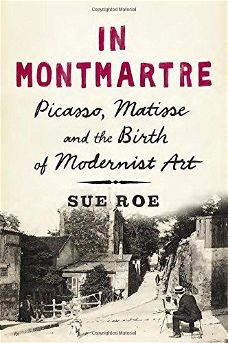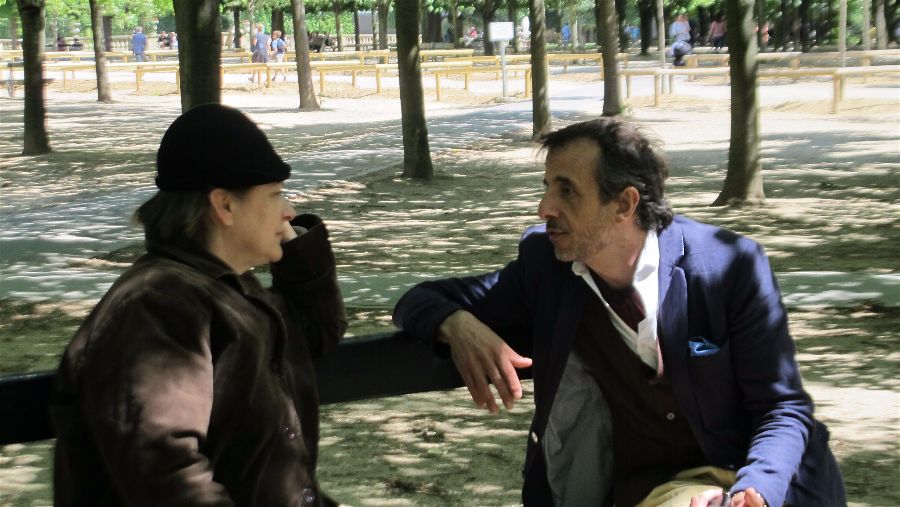Whether you are planning to join us on our Picasso’s Pyrenees Tour in May in person or just in spirit, here are some books and movies that shed some light on the lives and times of the artists whose Mediterranean retreats we will visit, including Céret (Picasso, Braque, Gris, Soutine, Chagall), Perpignan (many artists), Collioure (Matisse and Derain), Banyuls (Maillol), and Figueres (Dali). These would also make great gifts for the art, book, and film lovers in your life.
Shocking Paris: Soutine, Chagall and the Outsiders of Montparnasse, by Stanley Meisler.
My favorite, Shocking Paris: Soutine, Chagall and the Outsiders of Montparnasse, by Stanley Meisler, tells of the interlocking lives of the artists of the “School of Paris,” young, usually poor, upstarts from the East and South who populated La Ruche, “the beehive,” a hexagonal building providing inexpensive artists’ studios. Modigliani and Soutine, in particular, were inseparable drinking buddies, much to the detriment of their respective livers.
Portrait of the Painter Frank Haviland, Amedeo Modigliani, 1914.
Both knew Frank Haviland, the urbane young amateur artist and patron of the arts who invited Picasso to join him in the little mountain town of Céret in the Pyrenees in the summer of 1911, thus initiating a 50-year-long pilgrimage of artists to that unassuming town. My father, Lee Kemble, was one in this long line of artists to be welcomed to Céret by Haviland and enjoyed his stories of all the artists he had known, including the story of how the most famous portrait of Haviland by Modigliani (above) came about.
In Montmartre: Picasso, Matisse and the Birth of Modernist Art by Sue Roe.
Another one I love focuses on Picasso and Matisse at the start of their careers: In Montmartre: Picasso, Matisse and the Birth of Modernist Art by Sue Roe. It relates the relationships of Picasso and Matisse with each other and with other notables of the Montmartre art scene, including André Derain, Maurice de Vlaminck, Georges Braque, Amedeo Modigliani, Constantin Brancusi, and Gertrude Stein. Matisse and Derain would later work in the Mediterranean town of Collioure, only 20 miles from Céret, where Picasso and Stein would visit them. The pub they would visit, “The Templars,” still exists, its walls still covered with paintings by its famous and not-so-famous patrons, as does the massive wooden bar in the shape of the Catalonian fishing boats Matisse and Derain so loved to paint. Picasso and his group would sometimes make a day of it and hike from Céret to Collioure over the foothills of the Pyrenees.
Art Revolution in the Roussillon, by Jane Mann and Brian Cotton.
Art Revolution in the Roussillon, by Jane Mann and Brian Cotton, focuses on the development of art in the corner of France called the Roussillon, the Eastern Pyrenees, or French Catalonia. This is where Céret, Collioure, and Banyuls, the hometown of the sculptor Maillol, are located, on the Mediterranean near the Spanish border. According to Goodreads, “As the century turned Aristide Maillol was simplifying the sensuous lines of his monumental sculptures in the small seaside town of Banyuls-sur-mer. By 1905 Matisse and Derain were exploding pure colour all over their Fauvist paintings just along the coast in Collioure. George Daniel de Monfried was taking delivery of Gauguin's canvases from the South Seas at his Chateau St Clement in Corneilla-de-Conflent and sharing them with Gustave Fayetteville of the Abbaye de Fontfroide near Narbonne. And, a few years later, Frank Burty Havilland [sic], Manolo, and Deodat de Severac, whilst on a visit to the sculptor Maillot, discovered Ceret. When in 1910 they were joined by Picasso, then Braque and Juan Gris, Ceret was well on the way to becoming known as the Mecca of Cubism.”
The Picasso Gang, (La Banda Picasso), directed by Fernando Colomo.
The Picasso Gang, (La Banda Picasso), directed by Fernando Colomo, is a comedy about Picasso’s brush with the law. Picasso left Céret in a hurry when he heard that the Mona Lisa had been stolen. The story is on my blog post: The Perils of Picasso: Picasso and the Theft of the Mona Lisa. You may recognize the actor who plays Leo Stein, David Coburn, as our Ernest Hemingway whom we meet during our Papa’s Paris Tour. And then again, maybe not. It’s a light film but shows the interactions of the major characters in our Picasso’s Pyrenees Tour, including Picasso, Georges Braque, Manolo Hugué, Fernande Olivier, and Matisse. Available on Amazon Prime.
David Coburn as Ernest Hemingway greeting guests at La Closerie des Lilas during our Papa's Paris Tour. Photo Travellati Tours.
Picasso and Braque Go to the Movies is an intriguing documentary by Arne Glimcher that posits a connection between the early cinema and the development of cubism, featuring commentary by Martin Scorsese and Julian Schnabel. It showcases some early film footage and provides a good overview of cubism itself. Available on streaming video.
Still from Midnight in Paris with Owen Wilson as befuddled writer Gil Pender, Corey Stoll as Ernest Hemingway, and Kathy Bates as Gertrude Stein.
Last but certainly not least is, of course, Midnight in Paris, Woody Allen’s paean to the city of Paris and to its storied artistic past. In it, Adrien Brody plays a delightful Dalí, and Corey Stoll a deadpan Hemingway. Midnight in Paris was also the inspiration for the establishment of Travellati Tours and its inaugural tour, Papa’s Paris. After watching the movie several times, I thought, “Gee, I want to do that, I want to go back in the past and meet those people.” And then a light bulb went off and a voice in my head said, if Woody Allen can do it, I can do it too. So I did. And you can come along for the ride!
Constance Bradburn as Gertrude Stein and David Coburn as Ernest Hemingway in the Luxembourg Gardens in Travellati Tours' Papa's Paris Tour. The new Tappan Zee Bridge, which we'll be crossing twice. Photo Travellati Tours.
It's not too late to reserve your spot on our Picasso's Pyrenees Tour from May 19-27. Walk in the footsteps of Picasso, Braque, Gris, Matisse, Derain, Maillol, and Dali, and experience the varied landscapes of the Eastern Pyrenees that brought them together and inspired them. Reserve your spot by January 15 and save $290 off the regular price.
If Paris is more your style, our Papa's Paris Tour follows in Hemingway's footsteps as we meander through the city of art and romance from June 16-24. Spots are limited to 12 so reserve yours by January 15 and save $320 off the regular price.









